The premier Hindu holiday in India is Divali (has several spellings, including “Diwali”). It is held in the Fall of each year and, like Passover or Easter, its time is set according the Lunar cycle. In 2018, the dates were November 5 & 6. It actually lasts longer than 2 days — Hindus love to party — but these were the main celebration days. It commemorates the triumph of good over evil, light over darkness, knowledge over ignorance, conservatism over liberalism……. oops, I’m not supposed to make political statements – you can disregard that last one. (Sorry, Rich).
The streets, neighborhoods, homes and markets (including the western style malls) are decorated and lit up at night. Divali is also known as a festival of lights. It is marked by gift giving and greetings of “Happy Divali” amongst the celebrants. The month leading up to Divali is not unlike the 3 months that lead up to Christmas in the Christian world, especially the United States. Divali doesn’t hold a candle (pun intended) to Christmas in terms of the crass commercialism. We saw nothing that resembles “Black Friday” here in Chennai.
Later in November, we did see the annual Black Friday (Saturday here) videos of the usual riots and fights at Wal Mart and other places — over the internet….but I digress – this is an article about Divali.
The name is derived from the Sanskrit term dipavali, meaning “row of lights,” which are lit on the new-moon night to invite the presence of Lakshmi, the goddess of wealth (Britannica)
During the festival, small earthenware lamps filled with oil are lit and placed in rows along the parapets of temples and houses and set adrift on rivers and streams. The fourth day—the main Diwali festival day and the beginning of the lunar month of Karttika—marks the beginning of the new year according to the Vikrama calendar. Merchants perform religious ceremonies and open new account books. It is generally a time for visiting, exchanging gifts, cleaning and decorating houses, feasting, setting off fireworks displays, and wearing new clothes. (Britannica)
The festival of Diwali is associated with several different stories in Hindu mythology. Thus, Hindus find cause to celebrate this festival for various reasons. Yet, despite the regional variations, the festival universally marks the victory of good over evil. (New World)
On the 5th and final night of Divali, the sky becomes alive with fireworks. Picture a city of 10 – 12 million and many of them are shooting fireworks (“crackers” as they are called here) in various places and display magnitude. There is nothing that we do on the Fourth of July that comes close to it. The video that comes with this post will give you an idea. The children (young as 5) and youth love this excuse to create a lot of noise and havoc with their “crackers”. Elder Gibson’s hearing – bad as it was when we departed the States – will probably be gone by the time we return. We learned quickly that if you see a group of youth standing in a circle, looking down at the ground — and if you are within 50 meters — it is wise to immediately cover your ears. These aren’t your standard firecrackers – they are the equivalent of M-80s (before they were banned in the US).
Elder Gibson played with a sparkler for the first time since he was 5 years old on the Fourth of July in Southern CA. Think of the combination of a small child, a sparkler, and dry weeds – yes — Gibby started his first wildfire at the tender age of 5. Fast forward 64 years and this experience was more tame – on the ground floor parking area of our apartment – no flashy fuels to repeat his debacle of 1954.
Enough of the stories – the attached pictures and video don’t begin to show the magnitude of this celebration. It is an amazing display of fireworks, colorful decorations, flowers. Oh, and of course …. Food!! Enjoy….
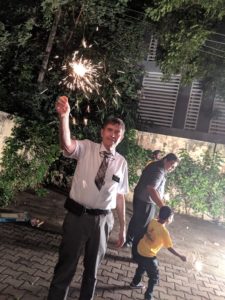
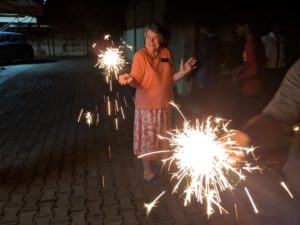
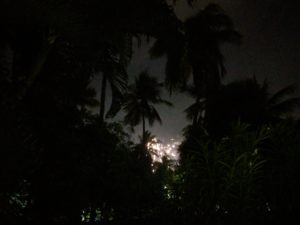
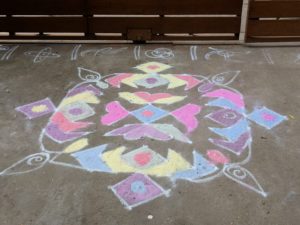
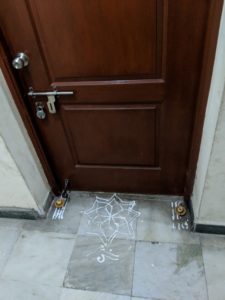
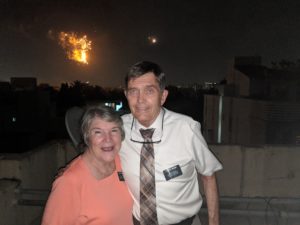
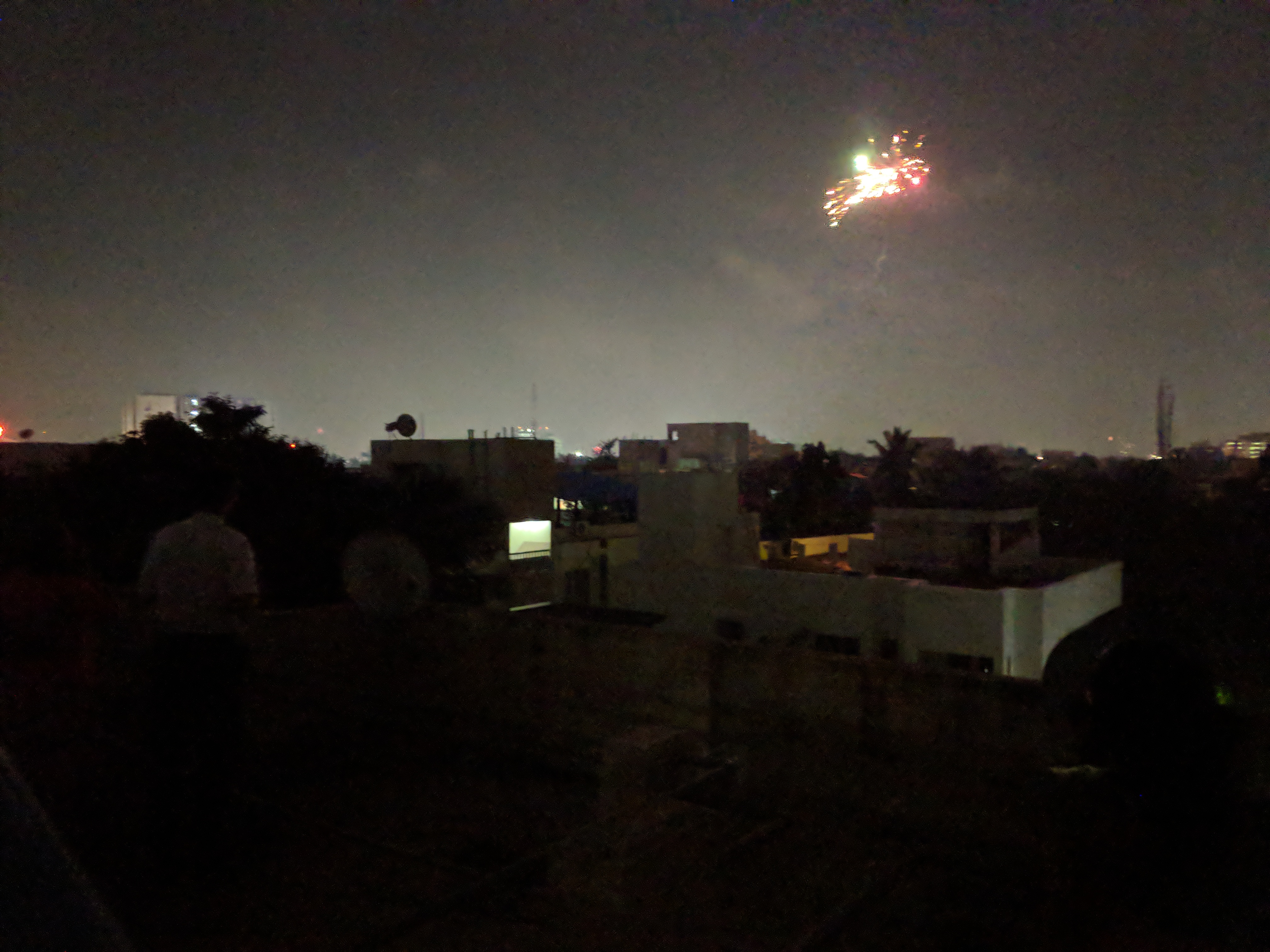
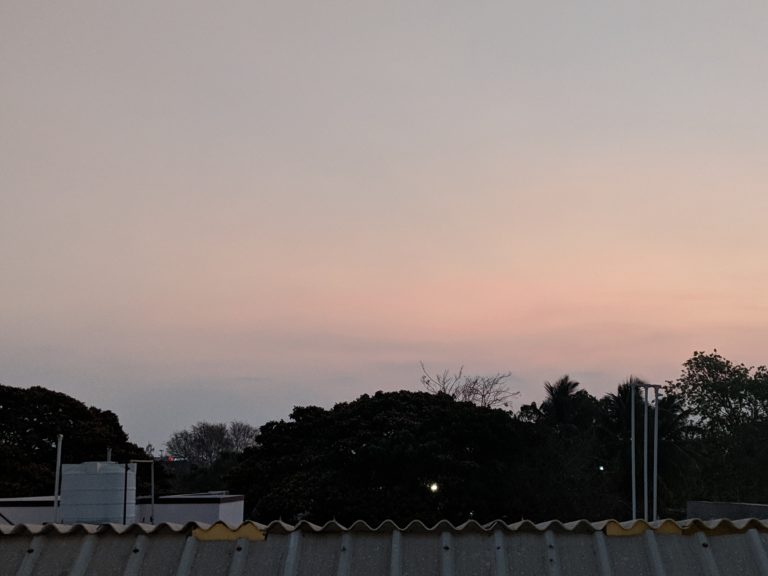
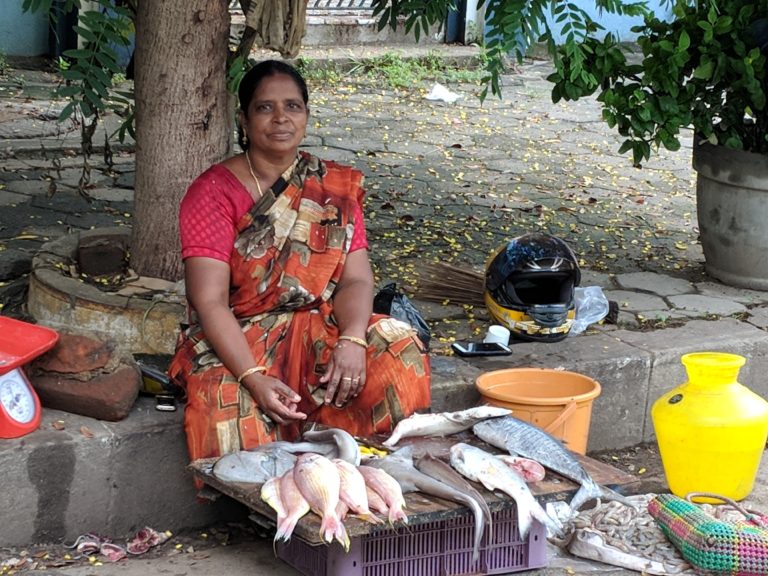
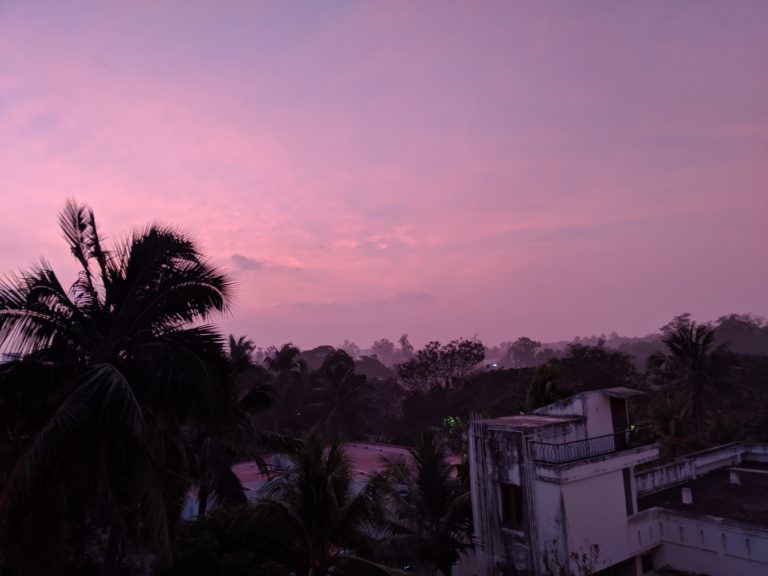
I always knew that Gibson was a pyro from his youth